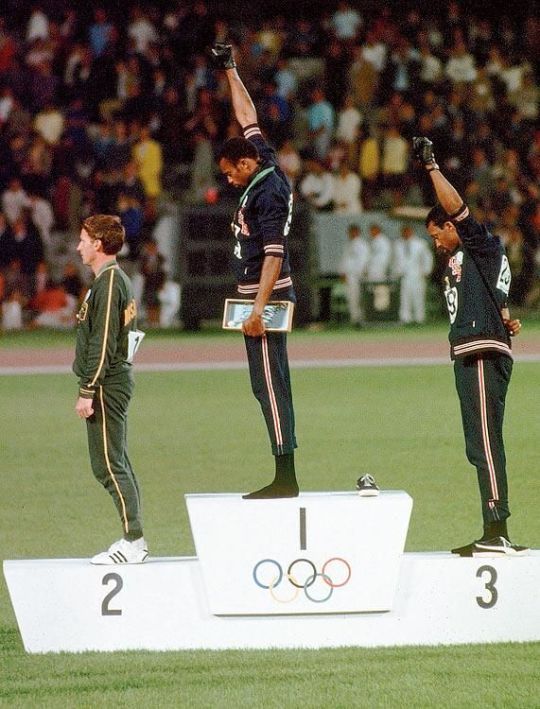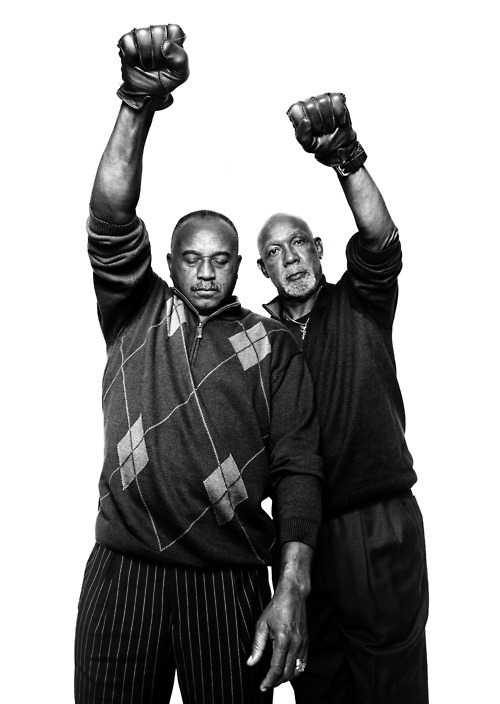A very famous cliché reads, a picture is worth a thousand words. Pictures bring words to life and lend themselves to the imagination as the mind beings to piece the puzzle together while continuing to read the story. One great story I first heard of through a picture was the story of the 1986 Olympics. I was in seventh grade the first time I saw this photo. My teacher, Ms. Francis, had the picture posted on the wall above the coat closets in class.
I saw two strong, Black hands wrapped in tight, black leather gloves pushing up to the sky. Two men on unequal pedestals put their feet down and their fists up for equal rights in their moment of glory. United States sprinters, Tommie Smith and John Carlos, placed in first and third, respectively, in the 1968 Olympics. In acceptance of their gold and bronze medals, Smith and Carlos raised their fists in salutation to the Black Power movement during The Star-Spangled Banner.

I was so in awe of this picture and eventually I learned story behind it. Smith and Carlos bowed their heads as they held their fists up, not because of the heavy Olympic medals dangling from they necks, but in honor and respect to such an important cause during that time, The Civil Rights Movement. Even the silver medalist, Peter Norman representing Australia, stood with them in support of the movement “by wearing an Olympic Project for Human Rights badge.”
Today, our nation still struggles to guarantee equal rights amongst citizen regardless of their race, religion, gender, or sexuality. Back then, during the Civil Rights Movement, it was so much worse. Extreme discrimination and segregation made it nearly impossible for people of color to live as equals to the majority. When I look at that picture, I can see how much strength it took for both Smith and Carlos to do the Black Power Salute. Their courage was met with booing from the crowd, death threats, and backlash from the Olympic Committee.
Without this picture, I don’t think it would have been easy to truly understand how monumental that moment was. Seeing such a powerful visual and then hearing the story of what actually happened placed me in the moment and it felt more real. I feel empowered every time I see this photo.

A variety of different perspectives also make a good story. Sometimes it can be difficult to remain objective in certain situations, but it is still important to provide all sides of the story. People should not base their opinions on only one piece of a grand scheme puzzle. Chimamanda Ngozi Adichie, a feminist author and activist, once gave an amazing Ted Talk titled, The Danger of a Single Story. In her talk, Adichie warns people against making judgments about a person or occurrence from one angle. Basically, a story is good when as many pieces of its puzzle have been assembled, when the information is accurate and plentiful. A good story is one that is told through different lenses and fosters thought and discussion.
Overall, pictures tell a story before one can even read the details. Different perspectives of that story add to its truth.